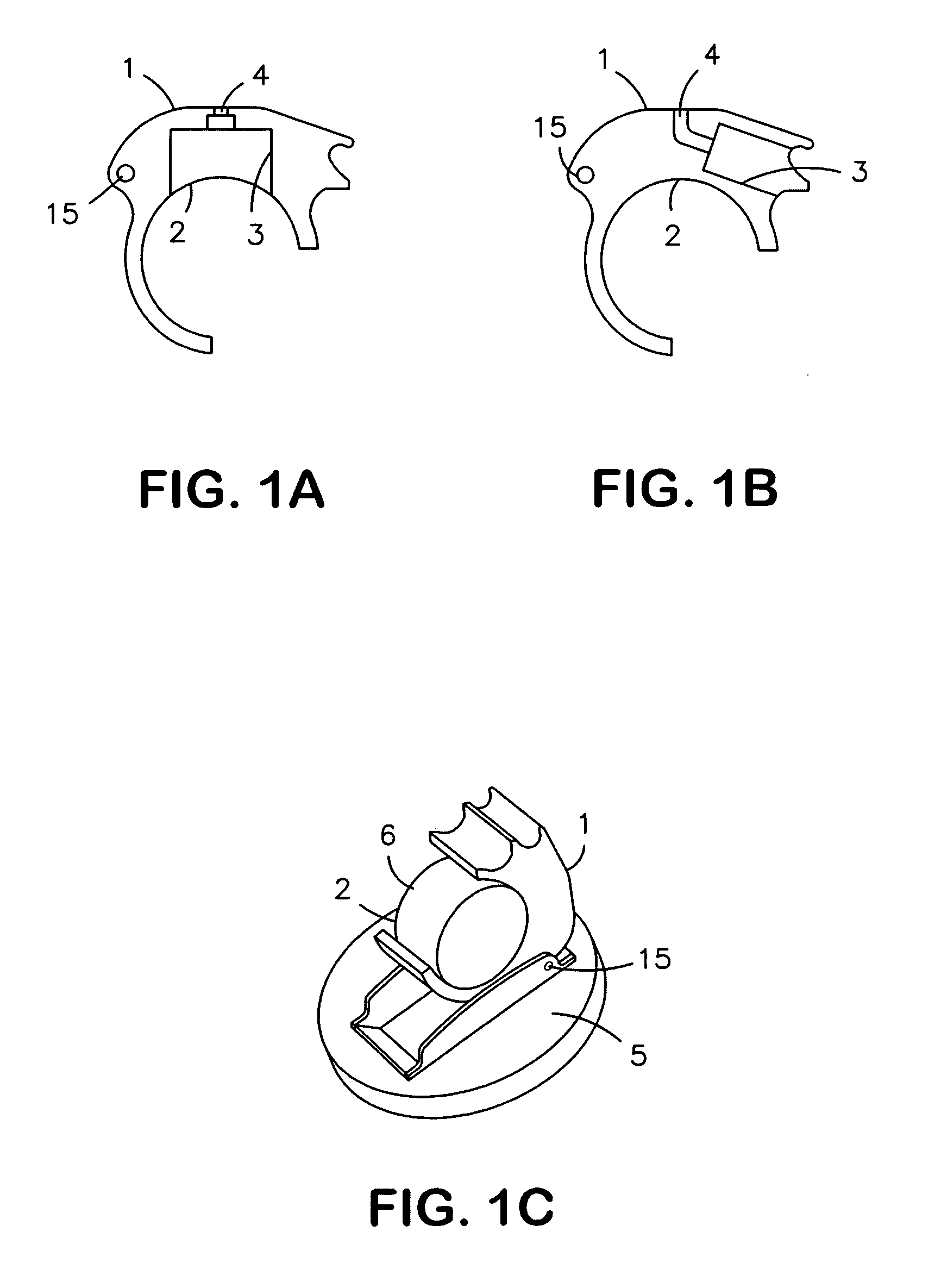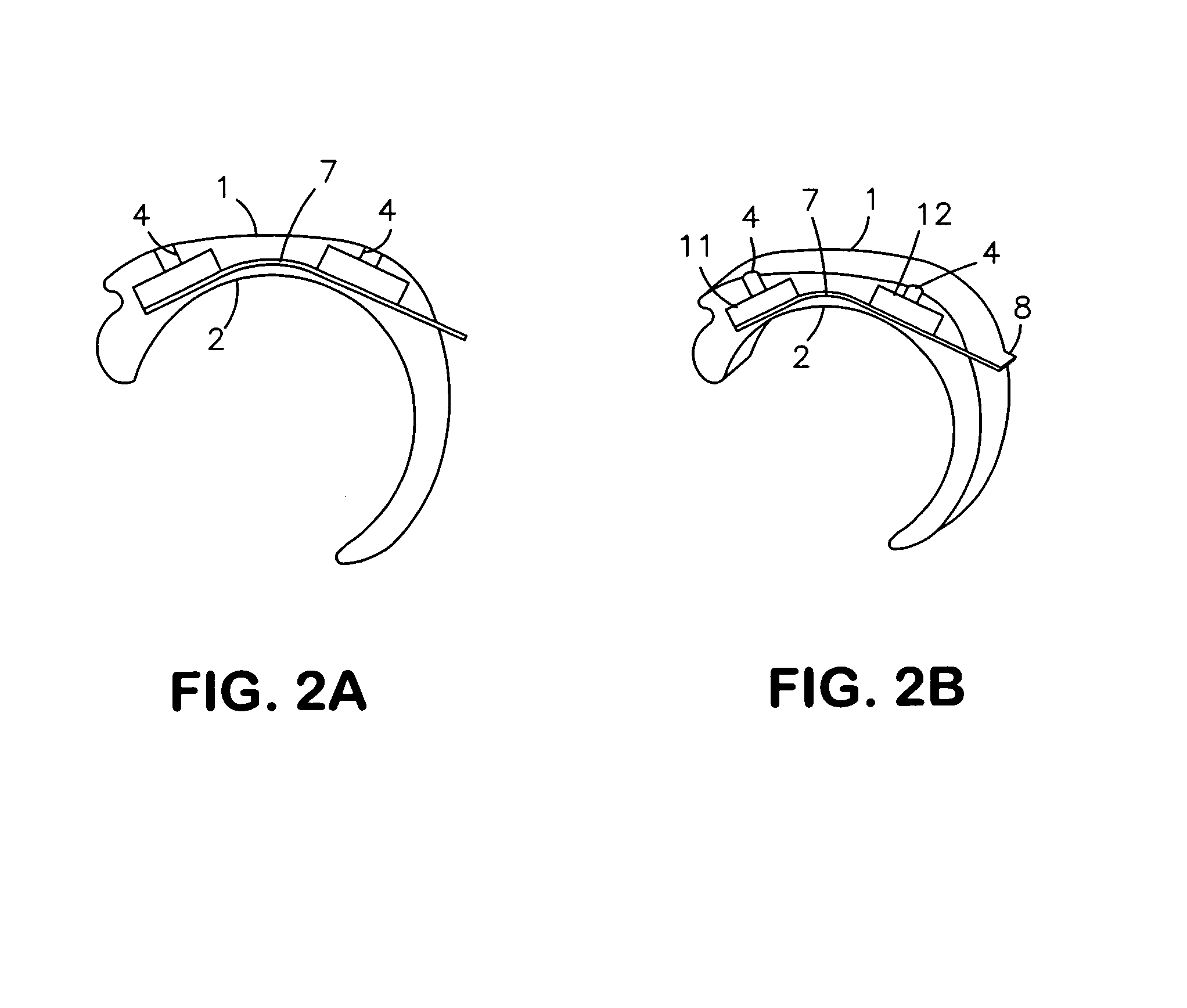Hearing aid with a microphone in the battery compartment lid
a battery compartment and microphone technology, applied in the field of hearing aids with microphones in the battery compartment lid, can solve problems such as occupying space, and achieve the effects of improving signal to noise ratio, enhancing the signal from the microphone, and reducing the noise of the battery compartmen
- Summary
- Abstract
- Description
- Claims
- Application Information
AI Technical Summary
Benefits of technology
Problems solved by technology
Method used
Image
Examples
Embodiment Construction
[0028]The battery lid shown in FIGS. 1A and 1B has a first side 1, which is facing the exterior and a second side 2 which faces the interior of the casing (not shown). The second side 2 is usually shaped to snugly fit the curvature of the battery. This can be seen in FIG. 1C, where the battery 6 is shown. In the embodiment of FIGS. 1A and 1B a recess 3 is shaped between the two surfaces 1 and 2. In the embodiment of FIG. 1A the recess is open toward the interior surface 2 and according to the embodiment of FIG. 1B the recess is sideways open and in both cases a microphone is insertable in the recess 3. From the bottom of the recess 3 a canal 4 is formed, which allows sound from the outside to enter the microphone port.
[0029]In FIG. 1C the battery 6 and battery lid is shown in perspective view along with a faceplate part 5. In the figure the lid is shown in the open position, and the material between the first surface 1 facing the surroundings and the second surface 2 facing the inte...
PUM
| Property | Measurement | Unit |
|---|---|---|
| curvature | aaaaa | aaaaa |
| size | aaaaa | aaaaa |
| temperatures | aaaaa | aaaaa |
Abstract
Description
Claims
Application Information
 Login to View More
Login to View More - R&D
- Intellectual Property
- Life Sciences
- Materials
- Tech Scout
- Unparalleled Data Quality
- Higher Quality Content
- 60% Fewer Hallucinations
Browse by: Latest US Patents, China's latest patents, Technical Efficacy Thesaurus, Application Domain, Technology Topic, Popular Technical Reports.
© 2025 PatSnap. All rights reserved.Legal|Privacy policy|Modern Slavery Act Transparency Statement|Sitemap|About US| Contact US: help@patsnap.com



